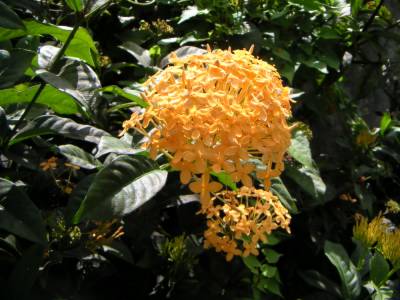Suite Martiniquaise: blog d'un retour au pays natal

#4 Music
Martiniquan music follows the same general processes of other music of the African diaspora, with perhaps the main difference being the French influence. The basic rhythm is an interpretation of the 3 in a 3-2 clave (I don't know if there's a proper name for it) that's found in calypso and central African music, for example. It's also prominent on David Murray's second Creole Project album Yonn Dé (which is excellent, by the way. I haven't heard the first. I've heard a bit of the new one, Gwotet which sounds good, but is much more funk-oriented. Yonn dé captured the atmosphere of a film like La Rue Case Nègres extremely well, I thought (let's ignore the fact that the film was made in Martinique), with Guy Konket as griot. On Gwotet Konket is much less present, with the guitar taking a major role).
So the oldest sources of modern Martiniquan music are the rural bèlè (very African, drum- and call-and-response-based) in which, despite the percussive density, the basic 3-accent beat is audible and various forms of French "light music", such as biguines, quadrilles and mazurkas (a creole mazurka is pretty far removed from a Chopin mazurka!). Influences have continued to aggregate: jazz and dancehall (more so than rap). One particularly incredible amalgam of all (or most) of this is to be found in the group Malavoi. There, a rhythm section laid down the syncopated beat, the excellent Paolo Rosine brought in jazz and classical influences on piano and the mid-sized string section completed this with the French tradition evoked above. The Martiniquan violin sound is less histrionic (vibrato-laden and statospheric) than the classical violin, but also less wild than American or Irish fiddling traditions (I don't think there's much, if any, double string playing, for example). It's a nice middle point. Singers such as Ralph Thamar came in on some tunes. If you can get a double disc best of, I highly highly highly recommend it. The son of Malavoi's founder recently created his own group, Mahogany, which extends the defunct Malavoi's concept, by adding a horn section, broadening the influences to Cuban music and beefing up the arrangements. The self-titled debut is a bit uneven and perhaps less catchy than Malavoi, but still good.
Stepping outside of the Martiniquan realm, we went to see France's latest r'n'b sensation, Corneille (in brief: Rwandan, parents killed during genocide as he hid behind sofa, flees to Canada, sings about his life, becomes superstar). I think that it was the first time that my whole family (all four of us) had been to a concert together and probably the first "screaming girl fan" concert I'd ever been to. I'd seen Corneille on TV singing a Sam Cooke song extremely well, so even though I didn't know any of his songs, I was somewhat interested. He began with "Redemption Song" and ended with two Marvin Gaye songs. The rest of the time he played his own songs, providing an interesting quick overview of 30 years of evolution of soul singing, in a nutshell from warm and tuneful to colder and a bit tuneless. Still, he played a new song (or so he said) that turned out to be my favourite, with an afro-funk feel.
Returning to the Martiniquan realm, a highly recommended CD is that of Mario Canonge, Rhizome. The pianist invites a somewhat lacklustre Roy Hargrove on a great caribbo-boogaloo track, but otherwise mainly takes the lead, with heavy percussive backup. Great pianist.
OK, now this damn suite is done. Finally.


